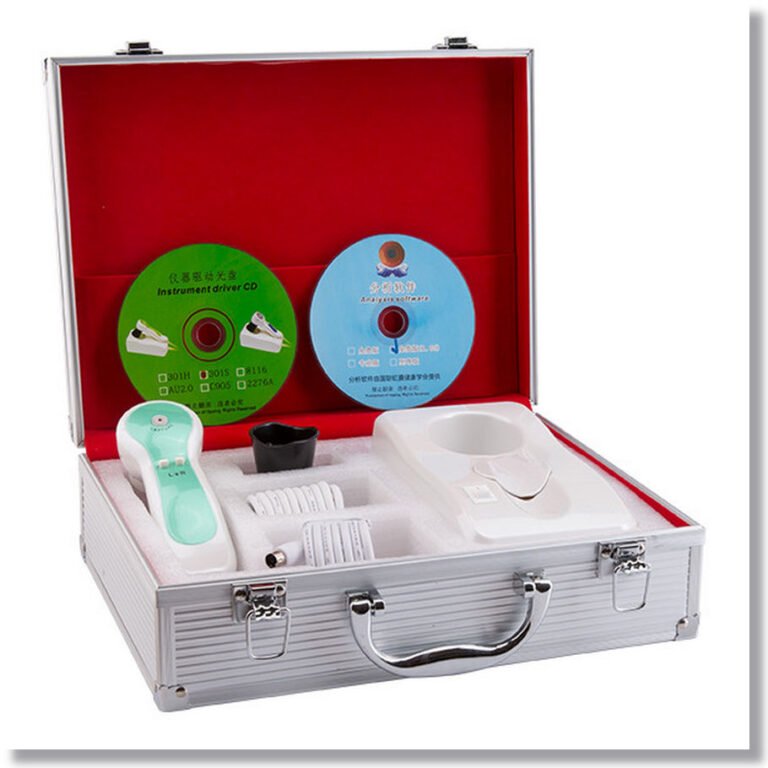
Iridology, is it nonsense?
Iridology, is it nonsense?
Some opponents of iridology have stated that Iridology is “non-sense” but is this really the case?
First of all let’s look at the facts, most of these critics have absolutely no education or formal training in the science of Iridology yet they have a negative opinion.
They cite several poorly designed Iridology studies that have been reported in Western scientific medical journals. These studies based their evaluations on outdated principles and in many cases, employed Iridologists who had insufficient or outdated training.
Iridology, like most sciences, is constantly evolving, as new information and studies become available this does not however mean that Iridology is invalid.
The adverse effects from these negative research studies have been very destructive to the science and practice of Iridology, especially in the United States. Researchers often find these negative studies as the only sources of information on which to base their opinions.
Often times some of the same critics that claim Iridology is “non-sense” are the ones who are still debating whether or not the use of, Herbs, Chiropractic, and Acupuncture are valid forms of health care.
Meanwhile in countries such as Germany, Russia, the United Kingdom and many Asian countries, have a much greater acceptance of Iridology. In fact, the Russian Government has sponsored Iridology research and has found it to be extraordinarily accurate. Many Medical Doctor’s in these countries have been using Iridology in their practice for decades.
Those who have studied the science and given it an open and unprejudiced consideration have discovered an amazingly useful, non-invasive, analytical tool.
It is of the utmost importance that a person uses good judgment when selecting an Iridologist. They must be sure that their Iridologist is properly trained with the most up to date information by an established and reputable institution.
Used correctly, iridology gives the individual, information concerning their overall health level that is not available in any other way. An iridologist’s services are an important element in a total, holistic health care program.

Conclusion for iridology
Conclusion for iridology:
Iridology is an excellent example of pseudoscience in medicine, displaying many of the core features. It was invented by one individual based upon a single observation and emerging from a culture of quackery and pseudoscience. It follows a pre-scientific notion of biology – the homunculus model. It lacks any basis in anatomy, physiology, or any other basic science. Its practitioners are mostly “alternative” practitioners who use the technique as a cold reading. And the research clearly shows that iridology has absolutely no effect – it does not provide any useful information at all.
Anyone using or promoting iridology is, therefore, a pseudoscientific practitioner. Any profession that endorses iridology is not science-based and should be looked upon with suspicion.

Что такое иридология?
Что такое иридология?
Иридология (также известная как иридодиагностика или иридиагностика) является методом альтернативной медицины, сторонники которого утверждают, что модели, цвета и другие характеристики радужной оболочки могут быть изучены, чтобы определить информацию о системном здоровье пациента. Практикующие соответствуют их наблюдениям с диаграммами радужной оболочки, которые делят радужную оболочку на зоны, которые соответствуют определенным частям человеческого тела. Иридологи видят глаза как “окна” в состояние здоровья организма.
Иридологи утверждают, что они могут использовать диаграммы для различения здоровых систем и органов в организме и тех, которые имеют гидриктивные, воспаленные или расстроенные. Иридологи утверждают, что эта информация демонстрирует восприимчивость пациента к определенным заболеваниям, отражает прошлые медицинские проблемы или предсказывает более поздние проблемы со здоровьем.
As opposed to evidence-based medicine, iridology is not supported by quality research studies and is widely considered pseudoscience. The features of the iris are one of the most stable features on the human body throughout life.[disputed – discuss] The stability of iris structures is the foundation of the biometric technology which uses iris recognition for identification purposes.
В 1979 году Бернард Дженсен, ведущий американский иридолог, и два других сторонника иридологии не смогли установить основу своей практики, когда они исследовали фотографии глаз 143 пациентов в попытке определить, какие из них имели нарушения почек. У пациентов сорок восемь были диагностированы с заболеванием почек, а остальные имели нормальную функцию почек. На основании их анализа пациентов’ Ирисы, три иридолога не могли обнаружить, какие у пациентов были заболевания почек, а какие нет.
The iris is the greenish-yellow area surrounding the transparent pupil (showing as black). The white outer area is the sclera, the central transparent part of which is the cornea.Iridologists generally use equipment such as a flashlight and magnifying glass, cameras or slit-lamp microscopes to examine a patient’s irises for tissue changes, as well as features such as specific pigment patterns and irregular stromal architecture. The markings and patterns are compared to an iris chart that correlates zones of the iris with parts of the body. Typical charts divide the iris into approximately 80–90 zones. For example, the zone corresponding to the kidney is in the lower part of the iris, just before 6 o’clock. There are minor variations between charts’ ассоциации между частями тела и областями радужной оболочки.
По словам иридологов, детали в радужной оболочке отражают изменения в тканях соответствующих органов тела. Один виденный практикующий, Бернард Дженсен, описал это так: “Нервные волокна в радужной оболочке реагируют на изменения в тканях тела, проявляя рефлексную физиологию, которая соответствует конкретным изменениям тканей и местоположениям.” This would mean that a bodily condition translates to a noticeable change in the appearance of the iris, but this has been disproven through many studies. (See section on Scientific research.) For example, acute inflammatory, chronic inflammatory and catarrhal signs may indicate involvement, maintenance, or healing of corresponding distant tissues, respectively. Other features that iridologists look for are contraction rings and Klumpenzellen, which may indicate various other health conditions.
Seven rings Iris zones/rings and accompanying body region/organ
Inner: Stomach.
Second: Small and large intestine.
Third: Circulation of blood and lymph.
Fourth: Internal organs and endocrine system.
Fifth: Musculoskeletal system.
Outer: Skin and organs of elimination.



































